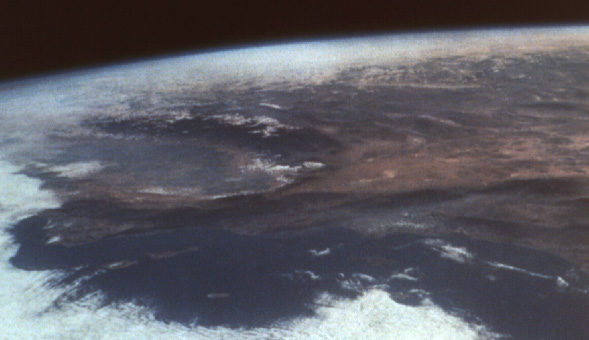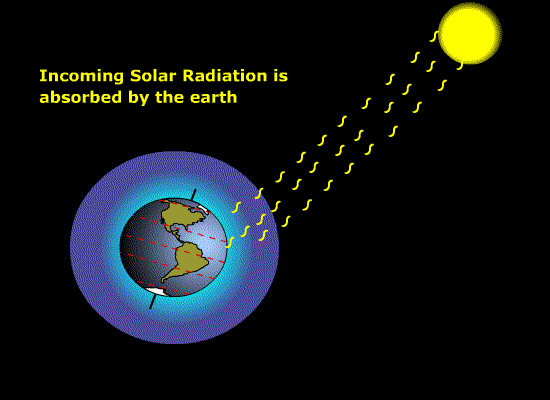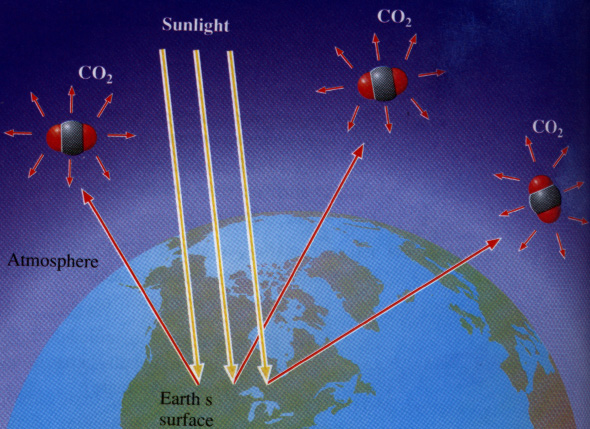The blanket of air.
Life on Earth depends on the thinnest layer of heat trapping gas,

the Earth's atmosphere is only about
fifty miles thick.

|
 |
Vaporous gases such as carbon dioxide, nitrous oxide, methane and CFCs in the Earth's atmosphere capture incoming short-wave radiation and reradiate the absorbed wave lengths as heat or long-wave radiation. The carbon dioxide dissolved in the ocean has absorbed most of the excessive carbon emitted raising the water temperature worldwide and generating a quickening of rising sea level since 1930.
|
 This is referred to as the natural greenhouse effect that warms the surface of the planet and the oceans. Otherwise the planet would be too cold for all but bacterial life to survive. The law of the optimum suggests that a certain level of heat trapping gases are sufficient to keep the planet from freezing but that any less than optimal and the ice ages dominate and any more than optimal can upset the prevailing climate. That is throwing prevailing climate into an erratic pattern of unpredictable behavior.
This is referred to as the natural greenhouse effect that warms the surface of the planet and the oceans. Otherwise the planet would be too cold for all but bacterial life to survive. The law of the optimum suggests that a certain level of heat trapping gases are sufficient to keep the planet from freezing but that any less than optimal and the ice ages dominate and any more than optimal can upset the prevailing climate. That is throwing prevailing climate into an erratic pattern of unpredictable behavior.
Energy sources of fuels.
"Tomorrow's Climate is Today's Challenge:"
Archer conclusion | Christianson | Gelbspan | Schmidt | Weart
Frequently Asked Questions

past patterns | current concerns | existing situation | abrupt changes | subject index

Carbon | carbon cycle | struggle over carbon | carbon's core role





